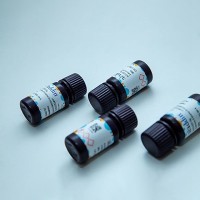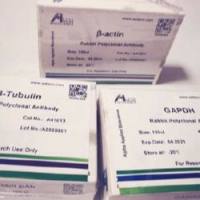Peptide Library Construction from RNA-PCR-Derived RNAs
互联网
714
The generation of peptide from messenger RNA (mRNA) provides a convenient source for current proteomic analysis. Intron-free mRNA possessing adenine-uracil-guanine (AUG) start codons can be translated into labeled or unlabeled peptides under a predetermined reticulocyte lysate condition. In conjunction with RNA-polymerase cycling reaction (see Fig. 1 ; RNA-PCR), full-length gene transcripts can be unlimitedly amplified for protein/peptide synthesis in vitro (1 ). Many commercialized in vitro translation systems provide a cap nucleotide, which can be added to the 5′ end of the amplified poly(A+ ) RNAs during the transcription step of RNA-PCR. Totally resembling mRNAs, the capped poly(A+ ) RNAs can be used to synthesize proteins/peptides with labeling and may help the functional analysis of protein activity if they fold correctly.


Fig. 1. An illustration of using RNA-PCR procedure for peptide library generation. The mRNA generated in step d can be capped by a methylated nucleotide such as P1 -5′-(7-methyl)-guanosine-P3 -5′-adenosine/guanosine-triphosphate for in vitro translation.









